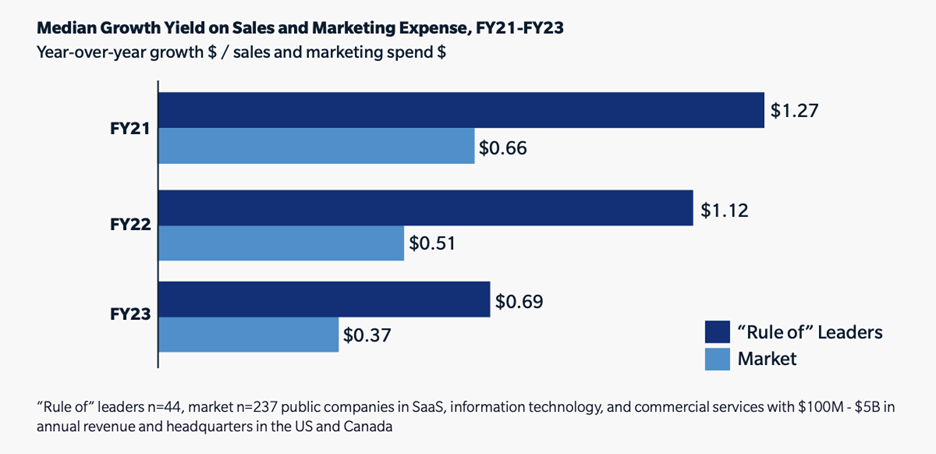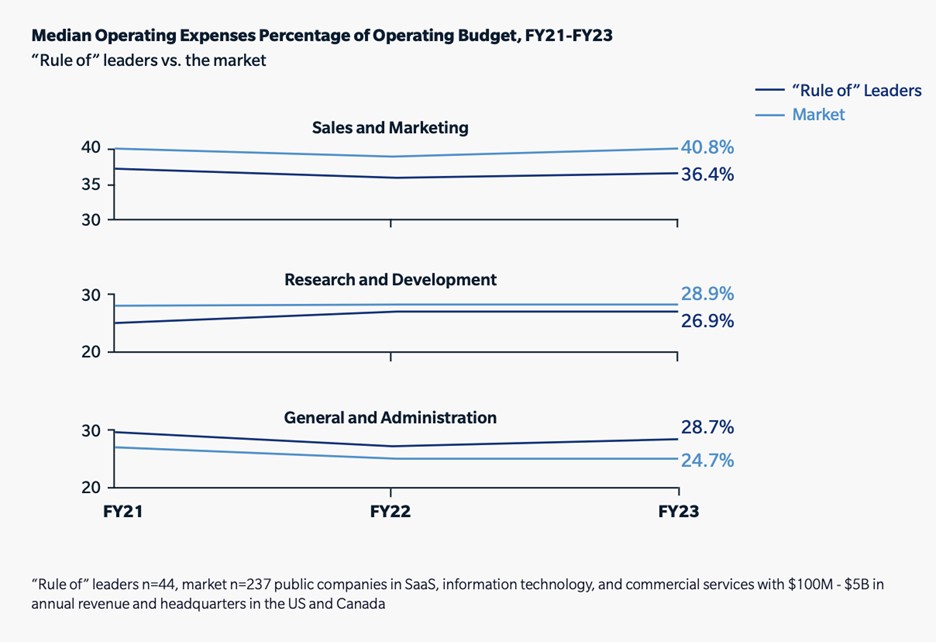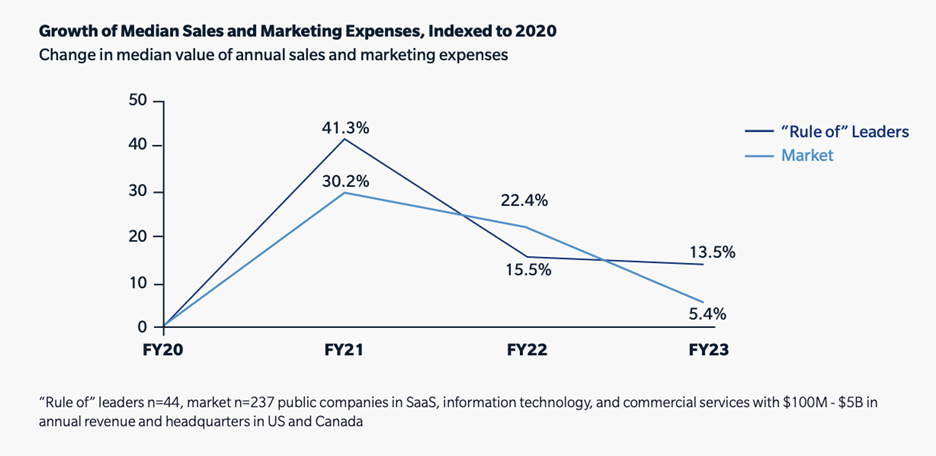How Market Leaders Grow Profitably Despite Rising Costs


The reality faced by B2B organizations today is a challenging one: profitable growth is increasingly elusive, rising costs has led to eroding commercial efficiency, and many firms are near the point of EBITDA erosion. Yet, despite universally weaker demand, some companies have managed to outperform their peers, maintaining stronger productivity and doing so with more profitability. In this blog post, we take a deep dive into the insights uncovered from market leaders who defy the median and succeed amidst challenging markets.
To identify how market leaders have sustained profitable growth, we first looked at our dataset of 237 SaaS and Tech companies, analyzing the compound annual growth rate (CAGR) of revenue over the past three years. Combined with metrics from their aggregate EBITDA margin in that period, we found that 19% (44 of 237) of these companies distinguished themselves from the pack by beating the median for both revenue and margin.
These market leaders—we call them “Rule of” leaders—have also seen much stronger returns on their commercial investments. For every dollar spent, these leaders realized roughly twice the growth compared to their peers:

Because their performance is indicative of profitable growth, we sought to understand how the “Rule of” leaders achieved better returns by comparing how they allocated commercial investments with average market performers. We expected to see different investments in sales and marketing or more spending in product development. However, our evaluations found more similarities than differences in the investment profiles of the “Rule of” leaders and the median.
Realizing Winning Results with Agile Investments
Our findings from discussions with “Rule of” leaders revealed a simple truth to their success—they simply transacted more business. They saw similar gross profits; they did not pay less for goods or substantially more per transaction. Moreover, CFOs of “Rule of” leaders did not plan their operating budgets much differently than the rest of the market, as spending was generally similar across organizations:

However, what sets these leaders apart from market peers is how rapidly they resourced their commercial teams. Spending 11.3% more than the market in 2021, they were ready to capture the pent-up demand that surged in 2021 and 2022. Conversely, as costs continued to rise and demand waned in 2023, “Rule of” leaders were able to preempt worsening market conditions and adjust their operating budgets, helping them maintain strong leftover margins for increased sales and marketing budgets:

This does not mean that the “Rule of” leaders simply spent more and achieved profitable growth. In fact, leaders spent an average of four percent less on sales and marketing compared to the median. The key factor that contributed to their success was not an overallocation of operating budget, they were instead faster to right-size their commercial teams to efficiently capture market opportunities, helping them secure a route to profitable growth.
In contrast, average market performers were slower to invest during the surge in demand, resulting in weaker revenue performance. As the markets worsened and costs kept increasing, they found their margins shrinking and fewer opportunities to get ahead of emerging trends. As a result, most organizations today struggle to achieve strong growth while maintaining profitable margins.
Our latest report goes into more detail about the insights uncovered here. From analysis of market trends to the four ways you can start improving commercial efficiency, discover how you can unlock profitable growth for your organization by reading our Commercial Efficiency report, tailored for growth leaders like you.